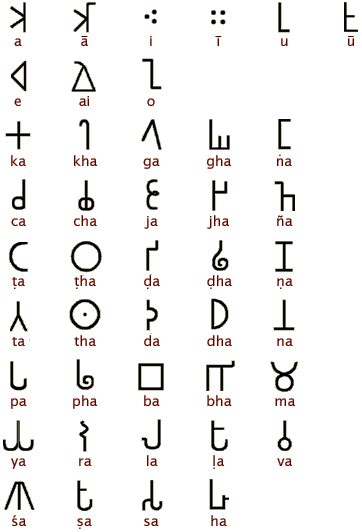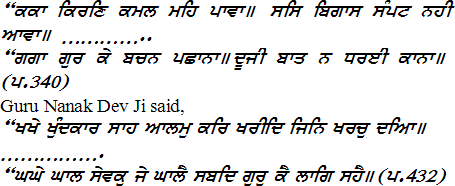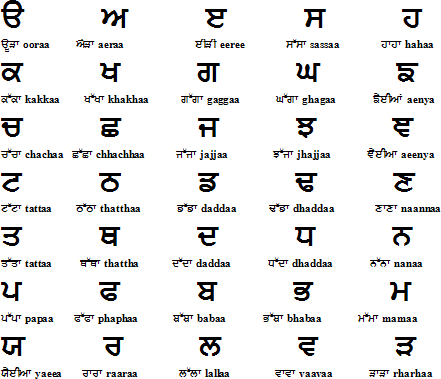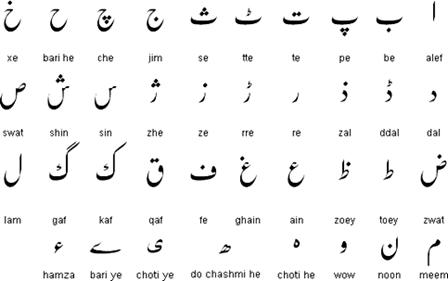Maanboli Panjabi
By P S Dhinsa
Date:11-11-06
Source: APNA
No one knows when and how this universe came into existence and when this HUMAN life started on this tiny particle, EARTH. No one can say when and how a certain language or its script started. Different human groups started talking to each other with signs or words where ever they got together. Ancient history records certify that Indian continent was quite well advanced, thousands of years ago and very lately had business relations with European countries before Roman Empire was well established. Indus Valley Civilization, covering area of Afghanistan up to Kabul and Gandahar(Qandhar), most parts of Northern India before partition up to Delhi, North/Western parts of Utter Pradesh, in-fact whole of Utter Pradesh, up to Varanasi, upper half of present Rajasthan, was advanced and their main language was Panjabi when Alexander of Macedonia, generally known as “Alexander The Great†conquered whole of Asia Minor and invaded India. This civilization was on its peak, between 2600 B C and 1900 B C. Panjabi language had a base, from Brahmi and Kharosthi scripts (Especially between 1500 BC and 600 B C and then during reign of King Ashoka about 400 B C when Brahmi script was in use). Inscriptions on the coins of Bactrian and Kushan kings certify that Brahami and Kharoshi were the languages in use, in this area. It is said that more than two thousand inscribed seals, are kept in clean, legible order by the Department of Archeology and Mueums, Government of Pakistan. A brilliant researcher, Mr. Lawrence has given the basic Brahami letter as below.
 
During the Gupta period (4th and 5th A D) Kharoshi faded a bit and Brahami flourished. Changes in curves of letters, evolved into new scripts like Kutil and Siddhamatrika, in area from Kashmir to Varanasi.. During centuries of change upto 9th A D, local languages developed as Sharda in Kashmir and present Himachal Pradesh, Devnagrari in the North (Panjab) and Nagari below Delhi, Hindi and Brij-Bhasha, in the South East of Delhi, Gujrati and Sindhi, in the South West of Delhi etc. I believe that even Iranians were speaking Panjabi well before 7rd or 8th A D, when SUFFI culture developed, branching away from ISLAMIC FAITH. Orthodox religious leaders, like Qazees and Mullahs in ISLAM and Panditts in HINDU FAITH had started twisting the actual faiths as started by the Prophet/Saint/Gurus, to suit their own views, resulting in the new generation of SAINTS.
 Dialects and scripts go on changing from time to time and place to place. There is saying that spoken language changes after every 12 Kos (15 miles now). In Asia Minor languages and scripts developed from Arabic while on Indian Sub-continent they developed from Sanskrit and Paali, Prakrit etc. Language adopted by the Ruler of the area always has great influence on its development. Centuries long Rule in India, from Central Asian Rulers resulted in the use of Persian and Arabic words, in the local languages, developing into Urdu script (much later), in the Indus Valley area while in Southern parts of India, Brig Bhasha/Hindi language developed in place of Sanskrit. Different parts had their local language names as Panjabi, Sindhi, Gujrati, Sharda, Takn, Nagan, Devnagari, Nagari, Maraathi etc. Letters and their shapes, always go on changing from time to time. When we look at the different scripts of all languages, written and spoken, in the Indian sub-continent, there is a lot of similarity, in the letters.
 Perhaps BAANI, written in Panjabi, by most Suffis, with Islamic back ground, was in Arabic script (now called SHAHMUKHI, named to distinguish it from Gurmukhi) while Panjabi, in GUMUKHI script, was in use since long, even before the 14th /15th century. We can not have a better witness than the  BANNI (KALMA) of Saint Kabir Ji (1398-1518), in Raag Gauri Poorvi-Baavan Akhari—page 340-3 , (all 34 letters, missing V) and Guru Nanak Dev Ji (Raag Aasaa-Patti page 432-4, (all 35), where Gurmukhi letters were glorified, in Guru Granth Saheb. Gurmukhi letters have been specifically elaborated, with first word of each sentence, starting with each Gurmukhi letter.
Kabir ji said,

(It is not possible to give whole Shabd)
These examples clearly certify that present GURMUKHI script was in use in Panjab as well as far off parts of U P as Varanasi where Kabir Ji lived. Moreover word “GURU†was in use even before Guru Nanak Dev Ji. This clearly shows that Panjabi was written in GURMUKHI script, long before the start of Sikh Faith, though Guru Angad Dev Ji modified some letters and added a few vowels and Matras. Many letters of Gurmukhi script resemble letters in Gujrati, Sindhi and Hindi. Possibly BANI written by most SUFFIES/BHAGATS, was also written in Gurmukhi script, to start with, when this script was the actual script of PANJABI language. Much later, during Sikh Faith period, PANJABI script was connected with SIKH GURUS and called “GURMUKHI†i.e from the mouth (Mukh) of Guru and BANI of SUFFI SAINTS from ISLAMIC back ground, in Arabic script, was named as “SHAMUKHIâ€, to distinguish it, from GURMUKHI Alphabets.
BANNI of many spiritually advanced personalities, collected by Guru Nanak Dev Ji was re-written by Guru Angad Dev Ji, in Gurmukhi script where needed. Guru Ji re-shaped and revised and modified the Gurmukhi letters, before copying, as curves and lengths and width of letters was different from each other.
        For centuries, the official language in India, was Persian during the reign of the Muslim rulers. Officials employed were mostly Muslims and Hindus with capability in Persian language. Even Mah. Ranjit Singh followed the suite, adopting Persian as official language though education, in schools, was in Gurmukhi script, PANJABI. British declared Urdu (Arabic script) as official language, after the death of Mah. Ranjit Singh Ji as URDU was the official language of the rest of India, under their Rule. Hence Panjabi suffered through out, due to such factors. After partition of India in 1947, Panjabi suffered a lot more, at the hands of our so called politicians who had only one aim, i.e safe-guarding their chairs. On both sides of the borders, Panjabi language was hit hard, though most of the top leaders were Panjabis. Due to the word â€Gurmukhi (from the mouth of GURU) Panjabi language was connected with the Sikh Faith, though Gurmukhi script was in use, before Guru Nanak Dev Ji and on the Indian side of Panjab Hindus, purposely showed down this language. Panjab Univ. syndicate, dominated by the Arya Samajis (Hindu organization) removed Panjabi as media of instructions, in education institutions and introduced Hindi in its place. After a very hard struggle, Panjabi was introduced in schools, along with Hindi. Later Chief Minister Bhim Sein Sachar proposed division of Panjab into Panjabi and Hindi speaking zones, to avoid conflicts among the public. Mrs. Ghandhi split East Panjab, again into two parts, i.e Panjab and Haryana, carving out Chandigarh and Delhi as C-states, under central Government, out of this area. More than half the population of Haryana, Himahchal Pradesh, Jammu and Kashmir, North-western parts of Utter Pradesh, Uttranchal Pradesh, c- states, Delhi and Chandigarh, speak Panjabi as their mother tongue. In the 1951 elections, Hindu leaders mobilised the Hindu families of Panjab, to declare Hindi as their mother tongue though they were living in the same village, along with Sikhs, for generations. How can they have two different mother-tongues? Some Hindu families pressurise their children to speak Hindi instead of Panjabi, even now. Similar reaction took place in Pakistan part of Panjab. Leaders introduced Urdu as official language through out Pakistan and suppressed Panjabi though most of them were/are from Panjabi speaking area.( A very detailed account has been given by Dr. Tariq Rahman, in his article The Panjabi Movement†in his book, Languages and Politics.)
Panjabi or Punjabi, is an Indo-Aryan language spoken by more than 60 million people, in Pakistan and the Indian state of Panjab and some other provinces, in India.
In Pakistan, Panjabi is written, in the Arabic script known as Shahmukhi ..
Below are the Baawan Akhar of Panjabi as I can present for new learners.


Numerals.
1Â Â Â Â Â Â 2Â Â Â Â Â Â 3Â Â Â Â Â Â 4Â Â Â Â Â Â 5Â Â Â Â Â Â Â 6Â Â Â Â Â Â 7Â Â Â Â Â Â 8Â Â Â Â Â Â Â 9 Â Â 10Â Â Â Â Â Â Â Â Â Â Â Â

Shahmukhi script

PANJABIES (said to be more than 130 million through out the world), this hard working section of the community have migrated to most parts of the world and have established well. I am certain that they will not let their mother tongue suffer any more.
P S Dhinsa.
M A. B.Sc.                    Â
Tel. 01582 651176.
6- St. Bernard’s Close, Luton. LU3 1QF.